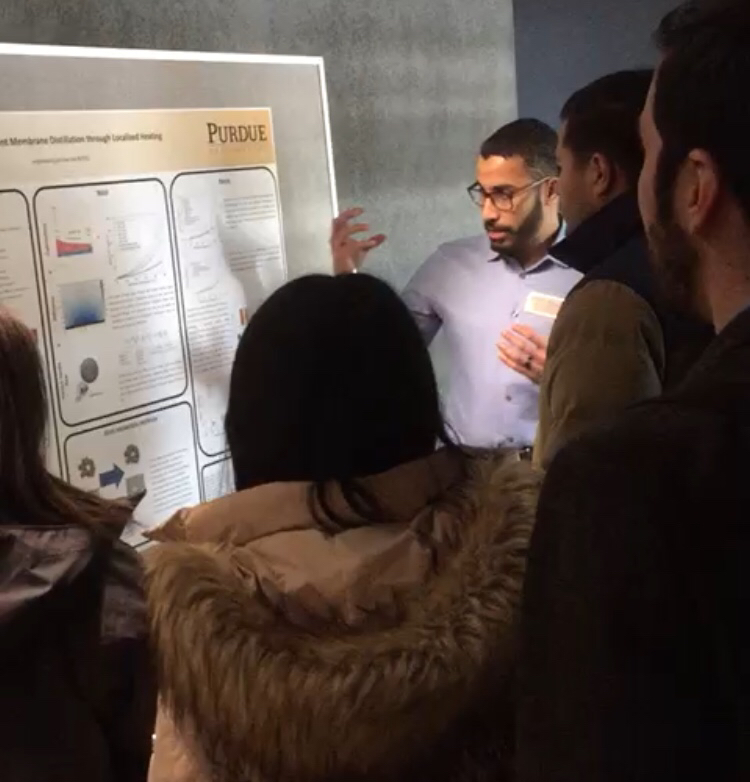Poster: Energy Efficient Membrane Distillation through Localized Heating
Poster: Energy Efficient Membrane Distillation through Localized Heating
| Event Date: | February 2, 2018 |
|---|---|
| Authors: | A. Alsaati and A. Marconnet |
Among the promising techniques for water treatment is Membrane Distillation (MD), which uses a non-isothermal membrane for separation . The temperature gradient provides a driving mechanism for fluid transport due to different vapor pressures at different temperatures. MD membranes only allow volatile vapor molecules to pass through hydrophobic holes while preventing feed fluid from penetrating through membrane . As a result of the absence of liquid entrainment in the MD method, species such as ions, colloids, and macromolecules, which are unable to evaporate and diffuse across the membrane, are completely rejected.
In contrast to other thermal technologies that relies on high velocity vapor to provide ultimate vapor liquid contact, MD utilizes hydrophobic microporous media to maintain vapor liquid contact. This allows MD to operate at low temperature without compromising vapor liquid contact, which permits the use of low grade waste heat. Additionally, membranes in MD play a relatively small role in separation: they maintain the vapor liquid interface, but do not filter contaminations from feed. This contrasts with filtration technologies where the pores are sized smaller than contaminants. Over time, for pressure driven filtration processes, the pores get clogged. On the other hand, membranes for MD operate with larger pores sizes compared to RO, which makes the membranes less prone to fouling and clogging
Despite the advantages of MD, the commercialization of the technology is constrained by high energy consumption due to heating the bulk of feed water. Alternatively, we evaluated a new MD configuration, locally heated membrane distillation (LHMD), that reduces energy requirement per unit mass of distilled fluid. Specifically, fluid heating is localized to the region of the fluid in close contact with the membrane reducing ambient thermal losses. Compared to heating the bulk feed water, localized heating can reduce energy consumption to reach same temperature near the membrane due to the reduced effective thermal mass and elimination of the feed re-circulation power consumption. Additionally, membrane structural reliability increases due to reduction of feed circulation erosion and hydrodynamic pressure. Localized heating at membrane interface with liquid allows membrane distillation method to be used in miniature and modular design to fit wider range of pervaporation application in addition to water treatment.

